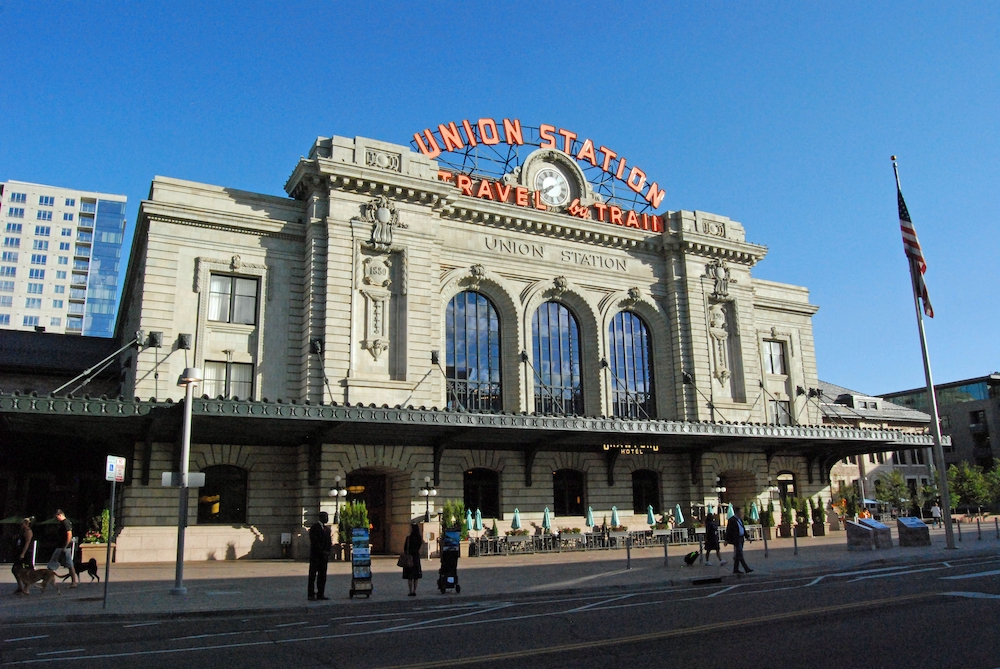
Denver Union Station’s predecessor established the city as the transportation hub of the West and the primary gateway to the Rocky Mountains. Opened on June 1, 1881, where 17th Street dead-ends into Wynkoop Street, Denver Union Depot was 504 feet long and 65 feet wide, the largest structure in the West. Within a decade, 100 trains were coming and going on its tracks, standard and 3-foot gauge, headed east across the plains, north to Cheyenne, south toward Pueblo, and from there, into mountains rich in silver and gold, or directly into those mountains.
The imposing Italian Romanesque building, designed by William E. Taylor, a Kansas City-based architect, was built largely of stone, but the 180-foot-tall, 32-square-foot-wide clock tower with double-decked spire and viewing platform that rose over the building’s midsection was wood. Fire and increased passenger volume would lead to two significant modifications, the last in 1914, when the current grand, Beaux Arts-style center section was built, creating a structure that, on the outside, looked then almost exactly as it does today.
The restored Denver Union Station officially opened on July 26, 2014, a century after the opening of that station, which now stands as a peerless example of what can be accomplished through enlightened preservation and creative repurposing. In it are the Crawford Hotel — named for preservationist Dana Crawford, a partner in Union Station Alliance, the group that planned, developed, and now manages Union Station — shops, and a wide variety of restaurants.
Its Great Hall was dubbed “Denver’s living room” by the planners. It is open 24 hours a day, invites local residents to come and relax, mingle, or, using the free Wi-Fi, work at long tables provided with outlets. Outside, Amtrak’s California Zephyr makes its twice-daily call under a curving, white-fabric canopy draped over irregular white-steel frames, the work of Roger Duffy of Skidmore, Owings & Merrill. The Zephyr rubs shoulders with frequent commuter trains from Denver International Airport, as well as commuter lines serving Wheat Ridge and Westminster.
The Great Hall is recognizably the old waiting room, but that canopy over the station’s eight tracks is very different from the platforms and umbrella sheds it replaced. Futuristic and airy, it’s nothing like the substantial Beaux Arts and Italian Romanesque styles of the 1914 center section and 1881 wings. Appropriately, it reflects the favored architectural style of the day, just as they did. The canopy is lit from within at night, an elegantly luminous effect. Its oval central opening allows views of the station and nearby mountains.
The tracks all stub-end in the station, but it’s been a long time since any trains left to the south anyway. Amtrak’s return to Union Station on Feb. 28, 2014, after a three-year exile to a bare-bones facility a few blocks away, at 21st and Wewatta streets, heralded the opening of the Crawford, shops, and restaurants. The completed package makes the temporary inconvenience a worthwhile sacrifice.
The reborn Union Station had been in the works since 2001, when the Regional Transportation District for Denver and Boulder, Colo., purchased the station and adjacent rail yards from the Denver Union Terminal Railway Corp. and stabilized the station. This agreement was jointly funded by RTD, the city and county of Denver, the Colorado Department of Transportation, and the Denver Regional Council of Governments — the “partner agencies.”
In 2002, the Denver Union Station Project Team was developed to prepare an environmental impact statement and to create a master plan, which would serve as the blueprint for preserving and redeveloping the station and nearly 20 acres of surrounding land. In September 2009, Denver’s city council formed the Denver Union Station Project Authority to take responsibility for financing, acquiring, owning, equipping, designing, constructing, renovating, operating, and maintaining the restoration project. The authority chose the Union Station Neighborhood Co. as master developer for this $800 million project from among 11 applicants. The fruits of all this planning are visible today.
There is, however, one revered detail of two iterations of Union Station that has not been recreated and won’t be: the “Welcome,” or “Mizpah Arch,” which stood on Wynkoop Street in front of the station’s central section. Workers built it using 70 tons of steel making the station 65-feet-tall, 85-feet wide and big enough to put 2,194 light bulbs to good use. When Denver’s then-Mayor Robert Speer dedicated the arch in 1906, it was just the Welcome Arch, but in 1908 on the side facing Wynkoop, away from the station, the word “Welcome” was changed to “Mizpah,” a Hebrew word expressing an emotional bond between separated people. Speer predicted that the arch would stand “for ages as an expression of love, good wishes, and kind feelings of our citizens for the stranger who enters our gates,” but it was torn down in December 1931 as a traffic hazard. Occasional efforts have been made to rebuild the arch, if on a smaller scale, but have yet to bear fruit.
Rise and decline
Denver had train stations before the Union Depot of 1881. The city’s first railroad was the Denver Pacific Railway, which ran north to Cheyenne, Wyo., and would later become part of the Union Pacific. By 1879 there were five stations, with the Colorado Central; Denver Pacific; Kansas Pacific; Denver & Rio Grande; and Denver, South Park & Pacific each having its own. There’s no historical certainty about who first proposed a union station late that year, but Union Pacific (which would consolidate with Denver Pacific and Kansas Pacific in January 1880) headed by Jay Gould generally gets the nod. The Union Depot & Railroad Co. of Colorado formed in November 1879 and began quietly buying up the four blocks between 16th and 18th streets and Wynkoop and Delgany streets. By June 1, 1881, when the depot officially opened with 28 trains arriving and departing, it had been in partial use for a month.
Originally, there were just three tracks: one 3-foot gauge for Rio Grande, two dual gauge, used by standard-gauge UP, narrow- gauge DSP&P, and dual-gauge Colorado Central. Almost immediately, the Rio Grande added a third rail to Pueblo, and Atchison, Topeka & Santa Fe entered as a tenant, paying Rio Grande for trackage rights. The Denver & New Orleans and Chicago, Burlington & Quincy, came in as tenants about the same time. Soon there were six tracks and, by 1890, 12. The depot grew so busy that in 1892, 188-foot, single-story extensions (later removed) were added to accommodate mail, express, and baggage. Rio Grande, UP, Colorado Central, and DSP&P had offices in the wings. In time all the railroads would move out, leaving those spaces for functions directly relating to the depot.
The narrow-gauge presence, seemingly incongruous for such a grand station, gave extra quirky interest to Denver Union Depot. The Rio Grande narrow gauge exited when the railroad became standard-gauge only as far as Salida in 1890. The DSP&P, part of Colorado & Southern after 1899, survived until April 1937, when it ended the last narrow-gauge passenger service to Leadville.
Union Depot was a great step forward for Denver railroading and thrived until March 18, 1894, when an electrical fire, started in the women’s restroom, gutted the center section and south wing of the depot. The wooden clock tower, which had towered 200 feet above street level, came tumbling down, destroyed. Reconstruction began immediately. Architects Van Brunt & Howe, from Kansas City like Taylor, built within the surviving stone walls, retaining for the most part the door and window openings and design articulation. The biggest changes were the grand Romanesque Revival clock tower, 40 feet taller than the original, with corner turrets and a clock face 14 feet in diameter, and a flatter roof line all around.
The catalyst for the next evolution, of Denver Union Depot into Denver Union Station, was not a calamity but too much of a good thing: Too many passengers for the essentially 30-plus-year-old station to properly accommodate. In August 1912, the original Union Depot partnership was dissolved and the Santa Fe, Burlington, Rock Island, Colorado & Southern, Rio Grande, and Union Pacific — with all railroads buying in, no more tenancies — created Denver Union Terminal Railway Co. to make massive improvements to the station.
This time local architects, Aaron M. Gove and Thomas F. Walsh, were hired. Using a gray Colorado granite and terra-cotta detailing, the Gove & Walsh firm created a monumental, all-new Beaux Arts center section with a spacious waiting room flanked by the various appurtenances needed by any great train station of the time: ticket office, baggage room, barber shop, parcel check, men’s smoking room, women’s retiring room, newsstand, lunch room with counter service, and a more formal dining room.
Then and now, passengers entering from Wynkoop passed under a cast-iron-and-glass canopy. On the other side of the station, the railroad side, there were major changes. Tracks were raised 5 feet to allow an underground pedestrian passageway, opened June 1916, to all tracks. Slightly raised platforms were added, as well as umbrella sheds to protect passengers from the elements. Now the station was ready for its finest hour.
Of course, Denver Union Station’s rebirth couldn’t have happened without some preconditions, and one of them was the diminishing of its original purpose: hosting passenger trains. Though the station was still buzzing in 1958, that proved a milestone year which, in retrospect, could be seen as the beginning of the end. For the first time, traffic through Denver’s now-closed Stapleton International Airport exceeded that through Union Station.
In 1958, name trains serving Union Station included Burlington’s California Zephyr, Denver Zephyr, Coloradoan, and subsidiary Colorado & Southern’s Texas Zephyr. The Burlington also delivered the Missouri Pacific’s Colorado Eagle. Union Pacific trains were the City of Denver, City of St. Louis, and Portland Rose. The Denver & Rio Grande Western ran the California Zephyr west out of Denver and also the Royal Gorge, the Prospector, the Yampa Valley, and the Mountaineer. Off the Rock Island came the Rocky Mountain Rocket. Santa Fe was the modest contributor to this list, operating only unnamed services connecting to its main line in La Junta.
By April 30, 1971, the eve of Amtrak, all that remained of those trains were remnants of the Portland Rose and City of Denver, the Santa Fe’s La Junta connection, the Denver Zephyr, and the “California service” remnant of the California Zephyr.
The following day there were just a revived, rerouted California Zephyr, now pointed north toward Cheyenne and the UP main, and the brand-new Rio Grande Zephyr to Salt Lake City, which Rio Grande operated in lieu of joining Amtrak. The Ski Train to Winter Park — initially run by the Rio Grande, which in 1988 sold it to Philip Anschutz’s Ansco Investment Co. — was a seasonal addition from 1940 until 2009. It returned under Amtrak auspices in 2017 after a two-trip trial run in 2015.
Reconception and rebirth
A prerequisite to Union Station’s resurrection was the revival of LoDo — “Lower Downtown” — where the station is located, a process that began with the redevelopment, first conceived in 1965, of “Larimer Square,” on the 1400 block of Larimer Street, Denver’s original main street.
“It was a block of wonderful Victorian buildings, waiting to be demolished,” according to Dana Crawford, the catalyst for that effort, which flew in the face of the mid-1960s urban-renewal mantra of “tear it down.” Not really a square (the name was inspired by San Francisco’s Ghirardelli Square, generally considered the country’s first major adaptive-reuse success), it was and is a mix of restaurants, shops, galleries, and offices.
The Oxford Hotel, right in Union Station’s front yard, less than a block down 17th Street, was the next important step for LoDo. (It is now managed jointly with the Crawford Hotel.) This circa-1891 Victorian was thoroughly renovated using photographs and original architectural drawings and reopened in 1983. Its Cruise Room bar, which dates from 1933, is an Art Deco classic. Next came a series of commercial lofts turned condos: Acme, Flour Mill, Ajax, others — all, like the Oxford, Crawford-involved projects.
“Popular opinion was that no one would want to live downtown,” Crawford says, “let alone in an old warehouse. I didn’t buy into that.” As it turned out, she was right. In 1988, John Hickenlooper, later governor of Colorado (2011 to 2019), and three partners opened Wynkoop Brewing Co., Denver’s first craft brewery, virtually across the street from Union Station. In 1995, the Colorado Rockies baseball franchise began to play in Coors Field, just a few blocks away. Yet Union Station stood only lightly used, deteriorating, with no clear mission. The waiting room, filled with many more wooden benches than would possibly be needed, oddly lit from above, was a sad place. The only food service was at a lunch counter with stools.
“There were many years when Union Station was on the chopping block,” Crawford says. “Until Mayor Wellington Webb, whose father was a redcap, said that Union Station must be saved.” It was during his 12-year watch that RTD and the Union Station Partners began the process that led to what we all can enjoy today.
“I’m by nature a preservationist, so that was not a difficult call,” Webb says. “For those of us in the West, preservation is especially important, since we have so little history. For the Union Station project we contributed $10 million of city funds into the pot. From that, I knew two things would happen. We’d get a seat at the table and a role in the planning.
“For me, Union Station has a very personal significance,” he says, “since I first came to Denver from Chicago as a boy aboard Union Pacific’s City of Denver. I remember coming through the tunnel from the tracks and into the waiting room to meet my grandmother.”
UNION STATION TODAY
Walk into the Great Hall from trackside today and be amazed. It’s soaring and monumental, with a 65-foot, barrel-vaulted ceiling. Immaculately restored details abound: 2,300 plaster columbines (the state flower) that line the soaring, two-story arches; two dozen brass sconces; and three magnificent chandeliers. Creating “Denver’s living room” was the goal of the Union Station Alliance, a term Crawford calls “a pithy expression to make people see it as part of their lives, a place to gather and be comfortable.” Scattered across the marble floor are a plethora of seating possibilities in various groupings: sofas, love seats, and easy chairs around coffee tables; straight-backed chairs facing each other over high tables; and others.
“The vision for Union Station goes back more than 20 years,” says Walter Isenberg, founder, president, and CEO of Denver-based Sage Development. “In 1990 we became partners with Dana Crawford’s Urban Neighborhoods in the Oxford Hotel restoration. Not long afterward Dana said, ‘Hey, let’s go over to Union Station,’ which at the time was a pretty depressing place,” Isenberg says. “‘This could make a really good hotel,’ we thought.”
Certainly the Great Hall is a gathering place, but it’s also a waiting room for California Zephyr, Winter Park Express ski train and commuter-rail passengers, as well as those arriving on RTD buses at the complex’s 22 underground platforms.
In the Great Hall, look toward Wynkoop Street, away from the tracks, and you’ll see the original ticket windows, once obscured by plywood, now again active but selling beer as the Terminal Bar. It pours 30 different craft beers, all on tap, all Colorado products. Above the bar is The Cooper Lounge, an elegant cocktail spot: beer below, martinis above.
In 2015, the lounge made Playboy Magazine’s Best Bars in America list, placing first in the train station category. Why Cooper? Job Adams Cooper was governor of Colorado in 1894 when the state capitol was built. Though buildings now block the view, the capitol’s dome was once visible through the 28-foot-tall arched, cast-iron windows that flood the lounge with light and offer city views to complement the views in the other direction of the Great Hall.
“I was reticent at first about having the hotel named for me,” Crawford says, “and the Cooper name came up as an alternative. Then my family and I relented, and Cooper was kept as the name for the lounge.
“We didn’t want to end up with a lot of chains you could find anywhere,” Crawford continues. Appropriate for a building clad in Colorado granite, the focus is on tenants who have regional roots. “Snooze, an A.M. Eatery,” first opened nearby in Denver’s Ballpark neighborhood.
Mercantile Dining & Provision follows in the footsteps of Fruition, a noted Denver restaurant. At Pigtrain Coffee Co., named after trailer-on-flatcar trains, you’re invited to “engineer your java,” brewed from locally roasted beans. Milkbox Ice Creamery, in the station’s former barbershop, serves 16 flavors from BRIX Ice Cream of Edgewater, Colo. The Cooper Lounge pours spirits distilled in Denver. Retail establishments are local too.
New dining additions include Pressed, a casual Latin-inspired eatery in the Great Hall. Olive & Finch, which has three other Denver-area locations and describes itself as “fine-casual,” will arrive in 2025.
The Crawford Hotel reception desk, previously part of the Great Hall, moved into a new private lobby area, The Parlour, as part of an $11 million station “refresh” completed in July 2024. Guest rooms now have private elevator access, and The Parlour provides space for nightly features such as live music and welcome cocktails.
Guest rooms come in three distinct flavors: Classic, Loft, and Pullman. Classic rooms, with the tall ceilings and expansive windows of the offices they once were, are decorated with a Victorian touch, reflecting the era in which the station’s two wings were built. In Union Station’s former attic, the Loft rooms —multilevel, creative, with exposed timbers and vaulted ceilings — pay homage to Dana Crawford’s projects converting warehouses to condominiums. The Pullman rooms overlook the tracks and have woodwork with Art Deco touches while also channeling the feeling of traveling aboard a Pullman car in the pre-streamlined era.
Like the Loft rooms, the Pullman rooms were constructed in found space, taking advantage of the wings’ 22-foot-high ceilings. “Since we had a 99-year lease, we needed to plan for a century of financial stability,” Crawford says. “So we needed enough guest rooms. Architect Jim Johnson thought of adding a half level over the kitchens of two restaurants. Then we came up with the idea of the Pullman-style rooms. The volume of the building was efficiently and imaginatively used to produce 112 rooms in all.”
Another feature of the hotel remodel: the addition of arched doorways, to honor the Mizpah Arch. Elsewhere, the Great Hall and Cooper Lounge were redesigned, receiving upgrades including new furniture and lighting.
Some things were rediscovered during the original renovation, lost items brought to light once more. Objects found inside the waiting room benches when they were disassembled — coins, tokens, and claim checks — are framed and displayed in the south wing Pullman hallway. Scroll signs, hand-painted on cloth with railroad initials and train names and destinations, once directed passengers to the right platform from the underground passageway. They now hang in the south elevator lobby.
A priceless artifact that was lost, found, and reacquired is the colorful neon sign with steam locomotive and caboose that once led travelers to the Union Station Restaurant: Continental Room and Caboose Lounge. The piece was sold to a casino in Black Hawk, Colo., then brought back to Denver and restored to become the centerpiece of the space recently taken over by longtime tenant Snooze.
Just outside that space, an elaborate water feature spouts irresistibly to frolicking children. The restaurant offers a stack of towels outside its door, next to a bin with this sign: “When you’re all dry, bring your towel back here and drop it in the basket. Thanks!”
It’s part of making innovation as enchanting as restoration, as well as Union Station’s consciousness of community.
“I’m just pleased that we were part of Union Station’s preservation,” Webb says. “If you don’t save your history, you don’t have one to remember. And for me there’s nothing more special than getting on a train in Denver Union Station and going from there through the Rockies.”
Happily, the station’s most iconic signage, a significant part of its history, was not lost. That’s the huge orange neon invitation, affixed in 1952 to the station’s roof on both track and Wynkoop sides, reading “Union Station, Travel by Train.” It glows as brightly as ever and is likely to for a long time to come.
This article originally appeared in Colorado Railroads, a special issue published by Trains Magazine in 2016. Trains Senior Editor David Lassen contributed to this 2024 update of this article.






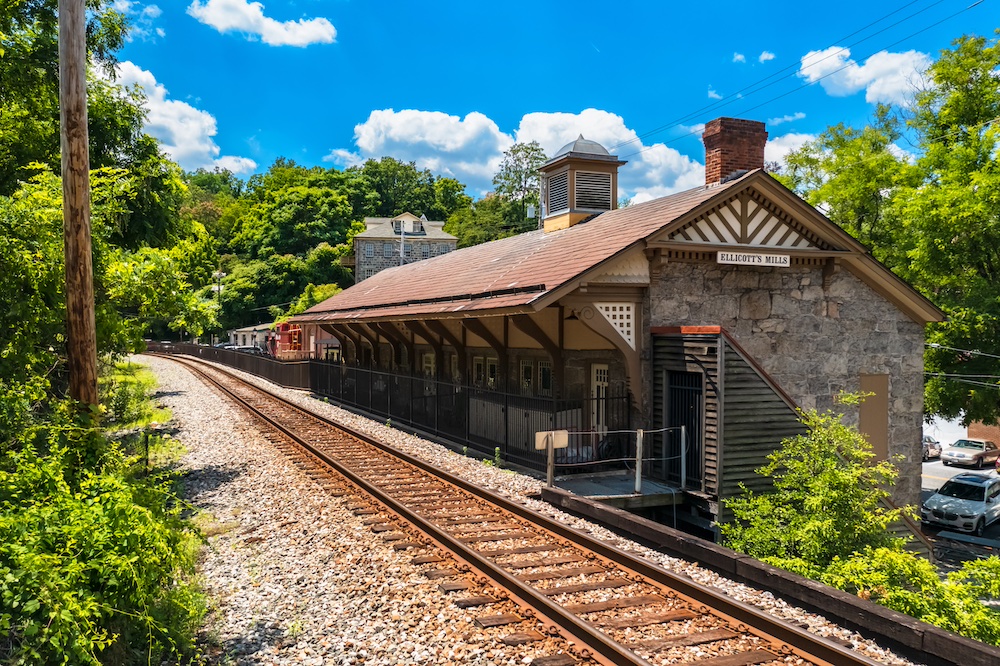
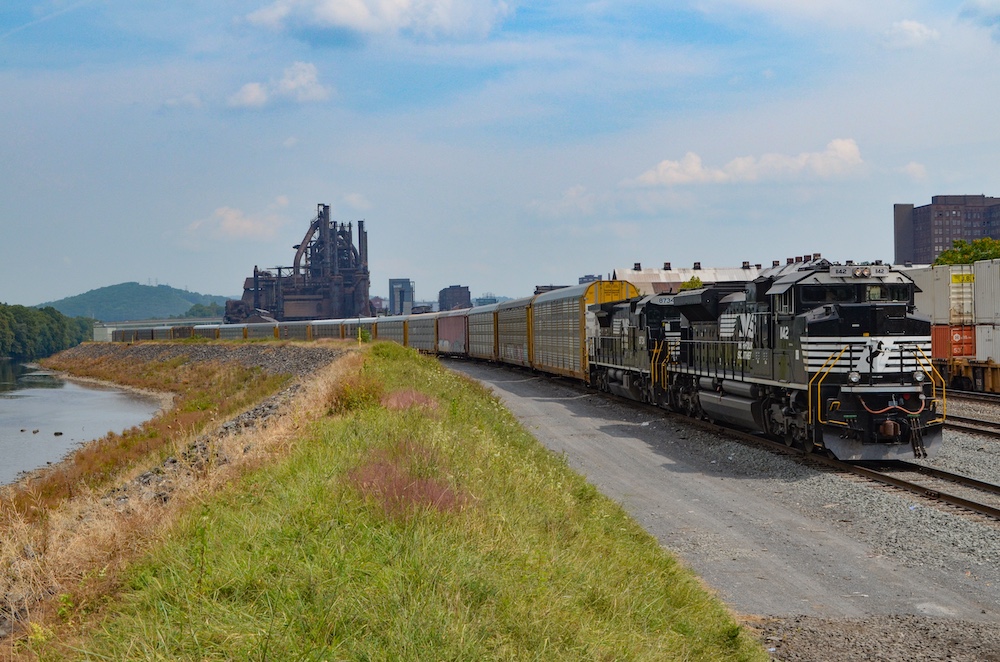
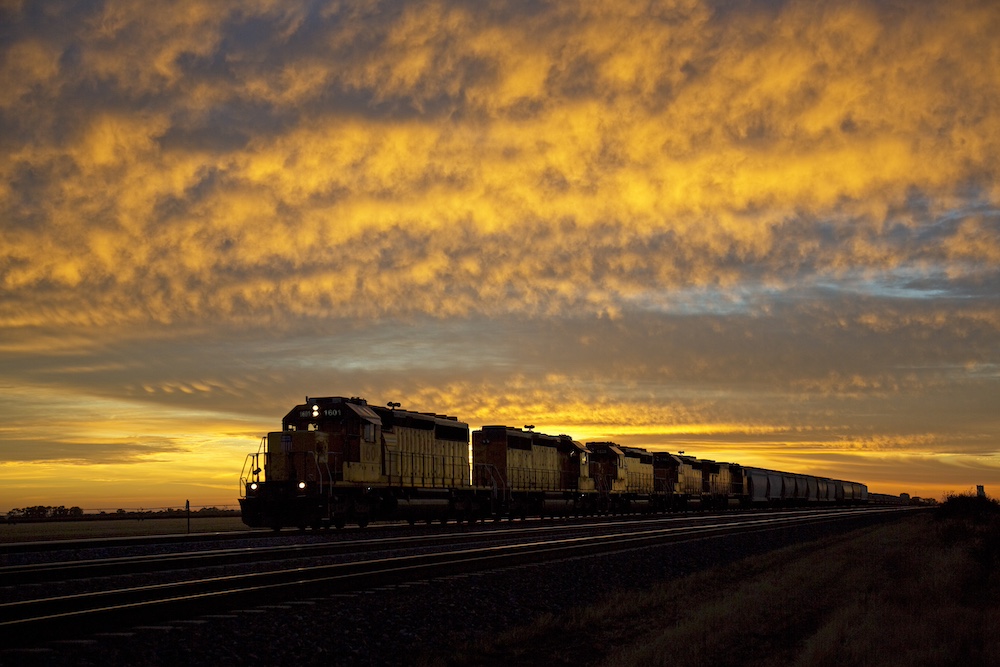
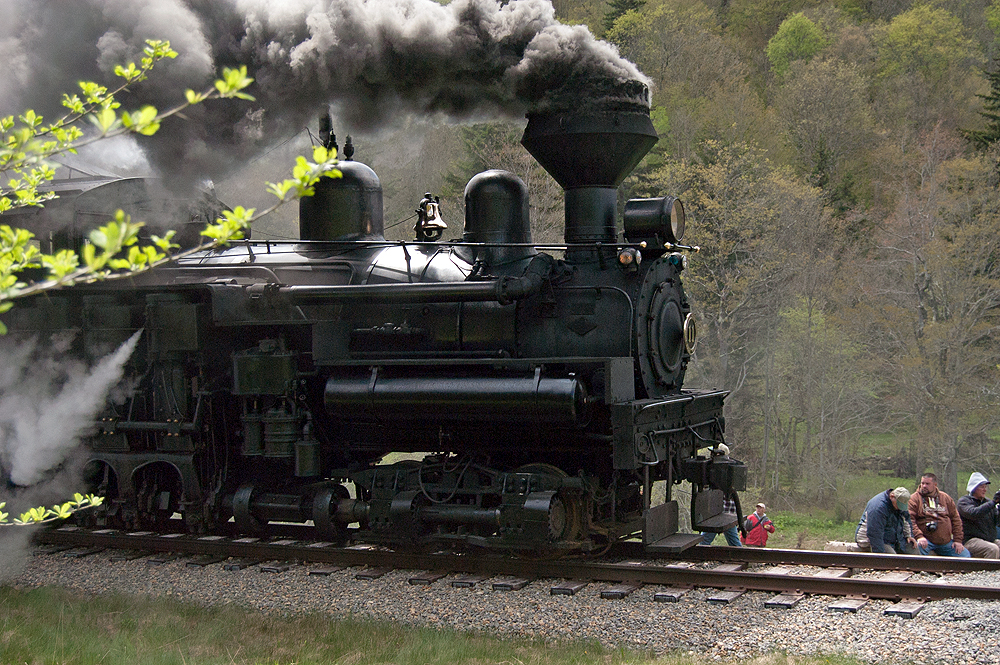




Mr. Pletcher, I believe the tracks to the south were truncated long before 2014. They were long gone when I rode the Frontier Days train in the 1990’s.
Mr. Dicenso, you are correct, I misspoke, the connection to the Mainline tracks to the south have been gone for a while. I was thinking about tail tracks permitting switching at the south end of the station. These were still in place at least as late as the 2008 Democratic National Convention. Honestly I don’t know when the mainline connection was truncated, would have to research it. In the 2014 renovation, they constructed a multi-story building at the end of the now stub tracks, eliminating the possibility of even adding switching capability; it appears that the developers called all the shots. Now they’re talking seriously about restoring passenger service to the south of Denver. I guess my point was that intercity passenger rail was given short shrift in the renovation.
The 2014 redevelopment committed one huge blunder: the previous tracks through the station to the south were truncated, making a stub-end station as the article points out. Future inter-city trains to the south will require a backup move.
Prior to the recent renovation, Union Station’s basement had:
a very small jail.
model train layouts. 2(?) model train clubs got this access after helping clean up after an early 20th century flood.
W R
Thanks for the article detailing the history and rebirth of Denver Union Station. I have passed through the station two times before the restoration. Once on Amtrak and once on the Rio Grande Zephyr when that railroad ran its own train rather than join Amtrak. I was glad to see Denver add the commuter trains to add more life to the station. With the redevelopment and growth in downtown Denver should help continue to make the station useful for years to come.
It was the Rio Grande that “delivered” Missouri Pacific’s ‘Colorado Eagle,’ not the Burlington.
Mr. Lassen – With the CZ and regional trains using the platforms, I have read that there was no room to accomodate the Rocky Mountaineer trains. Is this true, or was there another reason?
NO PICTURES?????